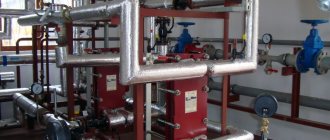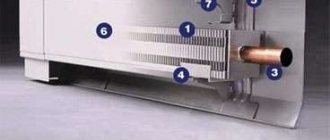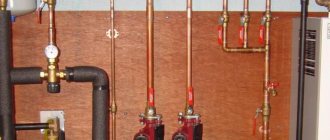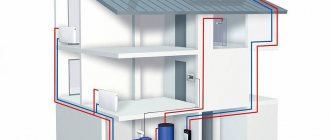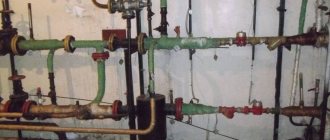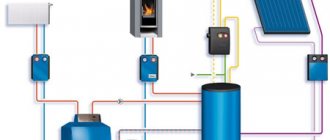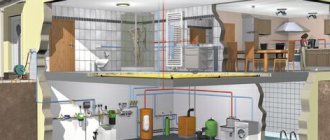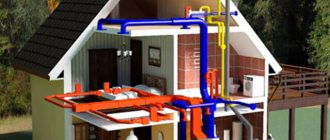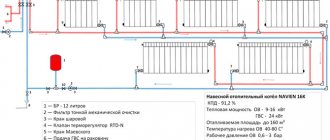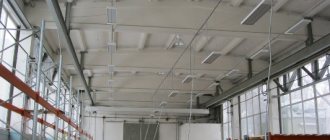02.12.2014
Many people associate electric heating at home with the installation of appropriate water boilers with heating elements, convectors or the installation of warm film floors. However, there are many more options. In modern private houses, electrode or ion boilers are installed, in which a pair of primitive electrodes transfer energy to the coolant without any intermediaries.
For the first time, ion-type heating boilers were developed and implemented in the Soviet Union to heat submarine compartments. The units did not cause additional noise, had compact dimensions, there was no need for them to design exhaust systems and effectively heated seawater, which was used as the main heat carrier.
The heat carrier that circulates through the pipes and enters the working tank of the boiler is in direct contact with the electric current. Ions charged with different signs begin to move chaotically and colliding. Due to the resulting resistance, the coolant heats up.
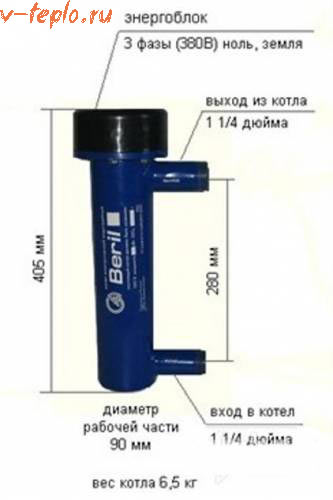
- 1 History of appearance and principle of operation
- 2 Features: advantages and disadvantages
- 3 Design and specifications
- 4 Video tutorial
- 5 Simple DIY ion boiler
- 6 Features of installation of ionic boilers
- 7 Manufacturers and average cost
History of appearance and principle of operation
During just 1 second, each of the electrodes collides with the others up to 50 times, changing their sign. Due to the action of alternating current, the liquid does not divide into oxygen and hydrogen, retaining its structure. An increase in temperature leads to an increase in pressure, which forces the coolant to circulate.
To achieve the maximum efficiency of the electrode boiler, you will have to constantly monitor the ohmic resistance of the liquid. At a classic room temperature (20-25 degrees), it should not exceed 3 thousand ohms.
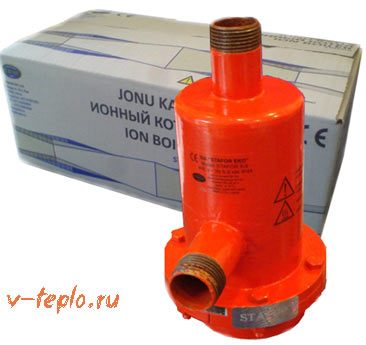

Distilled water must not be poured into the heating system. It does not contain any salts in the form of impurities, which means that you should not expect it to be heated in this way - there will be no medium between the electrodes for the formation of an electrical circuit.
For additional instructions on how to make an electrode boiler yourself, read here
Features: advantages and disadvantages
The ionic type electrode boiler is characterized not only by all the advantages of electric heating equipment, but also by its own characteristics. In an extensive list, the most significant ones can be distinguished:
- The efficiency of installations tends to the absolute maximum - not less than 95%
- No pollutants or ionic radiation harmful to humans are released into the environment
- High power in a body relatively small in size compared to other boilers
- It is possible to install several units at once to increase productivity, a separate installation of an ion-type boiler as an additional or backup heat source
- Small inertness makes it possible to quickly respond to changes in ambient temperature and fully automate the heating process by means of programmable automation
- No need for a chimney
- The equipment is not harmed by the insufficient amount of coolant inside the working tank
- Voltage surges do not affect heating performance and stability
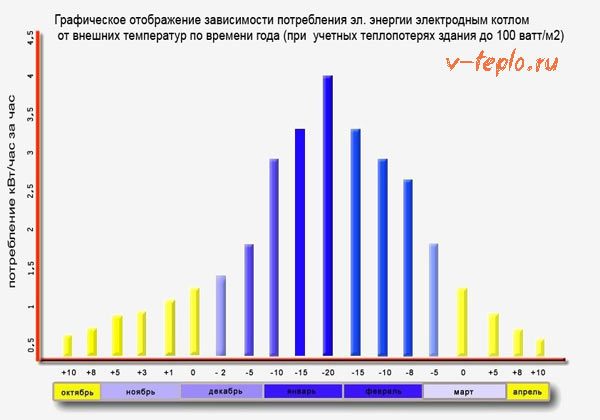

You can find out how to choose an electric boiler for heating here
Of course, ion boilers have numerous and very significant advantages.If you do not take into account the negative aspects that arise more often during the operation of the equipment, all benefits are lost.
Among the negative aspects, it is worth noting:
- For the operation of ionic heating equipment, do not use direct current power sources that will cause electrolysis of the liquid
- It is necessary to constantly monitor the electrical conductivity of the liquid and take measures to regulate it
- You need to take care of reliable grounding. If it breaks down, the risks of being electrocuted increase significantly.
- It is prohibited to use heated water in a single-circuit system for other needs.
- It is very difficult to organize effective heating with natural circulation, the installation of a pump is required
- The temperature of the liquid should not exceed 75 degrees, otherwise the consumption of electrical energy will sharply increase
- Electrodes wear out quickly and need to be replaced every 2-4 years
- It is impossible to carry out repair and commissioning work without the involvement of an experienced master
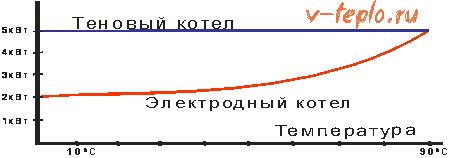

Read about other methods of electric heating at home here.
Steam submarines
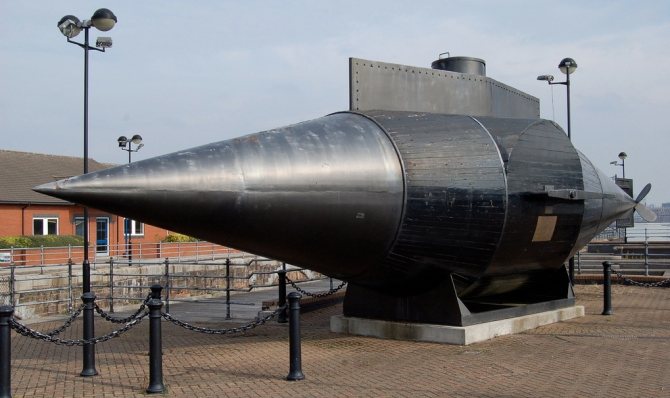

Those interested can read the history of steam engines in three parts - the first, second and third ... And here, I wrote about steam cars and steam locomotives ...
In the process of writing the aforementioned articles, a lot of material has accumulated on various steam-powered devices, including submarines. I decided to share with the readers this, in my opinion, interesting information.
The first submarines
The idea of submarines has been known since ancient times. There are assumptions that in 4th century BC e. Alexander the Great used something similar to a diving bell in which he sank under water. Evidence of this event has been preserved in paintings of a later time.
A 16th century painting depicting Alexander the Great submerging in a glass vessel.
In 1578 year, William Bourne outlined in his book "Inventions or Devises" the concept of an underwater vehicle. He proposed a closed vessel capable of submerging under water by reducing the volume.
Actually, there is only this sketch.
In 1620, Cornelius Drebbel, using the work of William Bourne, built a submarine from wood covered with leather.
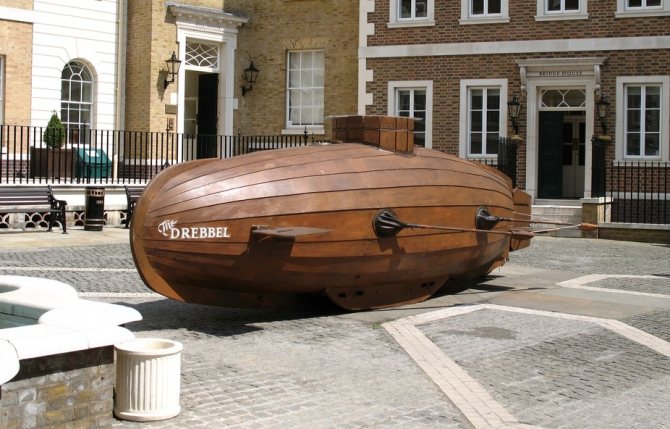

This boat was not a steam boat, but it was worth mentioning as one of the first submarines. And as a temporary reference point for the beginning of the construction of the submarine fleet.
B 1720-1721 years, Efim Nikonov, at the direction of Peter I, built first a model, and then, in 1721-1724, and a full-size submarine "Hidden Ship", which became the first Russian submarine.
All three tests that passed on the Neva ended in failure, and after the death of Peter the inventor was exiled to Astrakhan. That was the end of it.
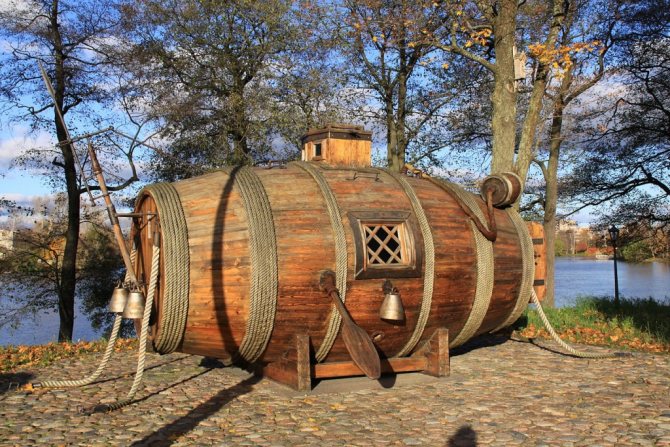

Layout of the "Hidden Ship". Sestroretsk. Trials took place here, as evidenced by the monument.
On the left you can see a harpoon, with its help it was supposed to pierce enemy ships, and the "bells" around the perimeter are sinkers.
The first military the submarine was "Turtle"... It was built by the American engineer David Bushnell in 1776.
With the help of this device, it was planned to attach explosives to enemy ships.
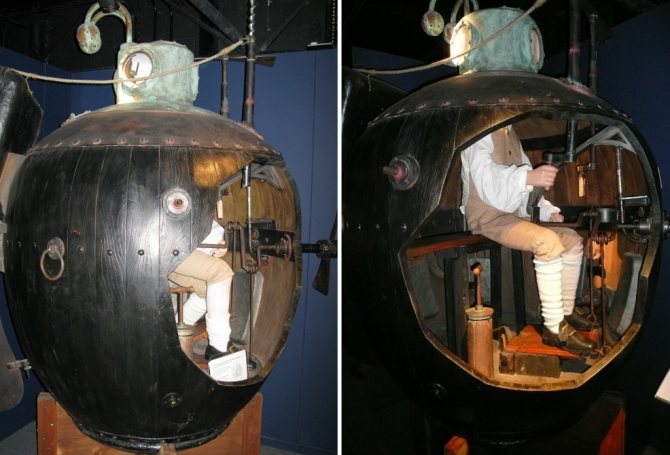

Nautilus
The common name of the three submarines built in 1800-1804 according to the projects of the American engineer Robert Fulton. The Nautilus is considered to be the first practical submarine.
Museum "The Cité de la Mer"
Ictineo II
Ictineo II is the first steam submarine.
Built in 1865 Spanish engineer Narsis Monturiol from Catalonia.
The boat was powered by a steam engine with two heat sources.The standard firebox with coal was used when the boat was floating on the surface, and to move under water, Monturiol had to invent the first air-independent engine, based on the chemical reaction of various substances in which enough heat is released to heat the boiler. After all, if you flood the stove under water, then the air will quickly burn out and you will not float far.
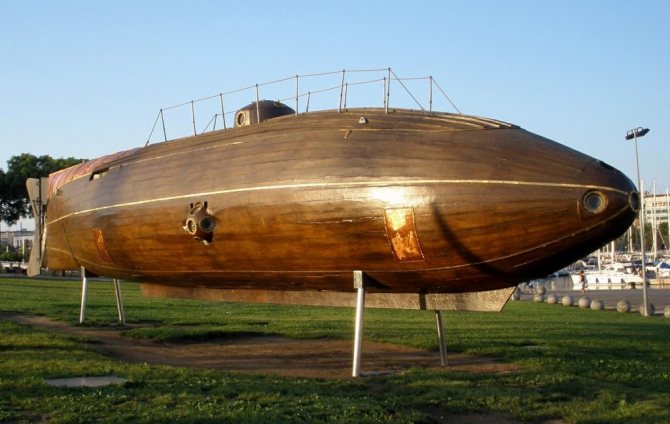

Harbor in Barcelona.
She plunged 30 meters.


The interior decoration can only be seen on the model.
Resurgam
In 1878 George Garrett, a British priest and inventor, built a boat powered by a closed loop steam engine.
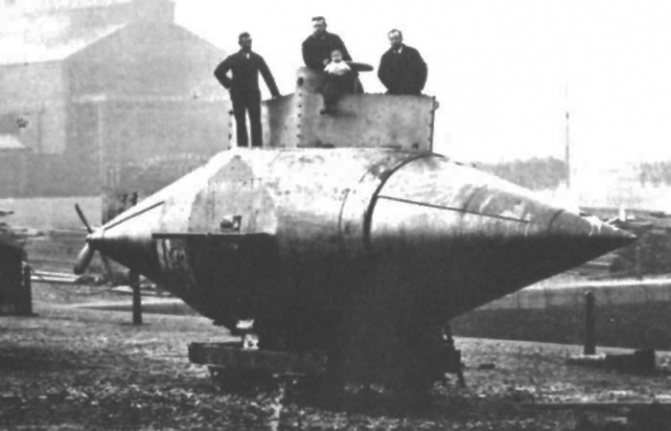

Most of the time the boat was floating on the surface, and during the attack, the pipe was removed and the boat dived under the water. The boat could move under water as long as there was enough steam in the boilers, and thus sailed about nine kilometers. Because of this, by the way, there was a hellish heat inside.
Despite the fact that the first copy of this boat sank, she was interested in the Swedish industrialist Torsten Nordenfelt, who wished to finance the construction of submarines.
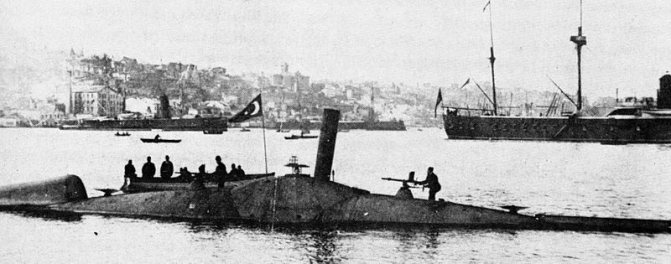

Together with Garrett, they built one for Greece, two for Turkey and one for Russia. By the way, the boat did not reach Russia, on the way it ran aground and the Russians refused to pay.
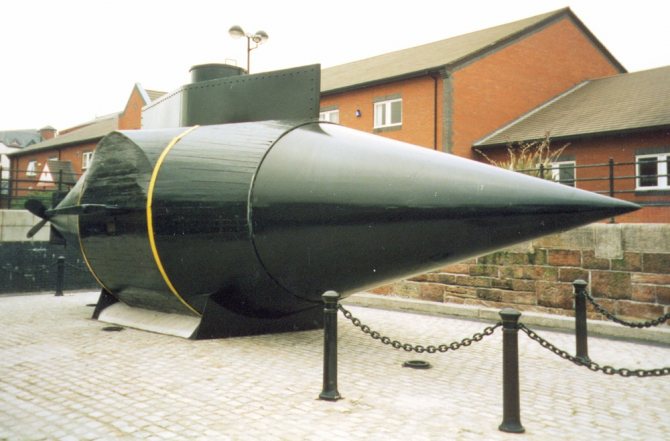

The characteristic forms clearly indicate the purpose of the boat, it was created to inflict holes on enemy ships.
K class submarines
K class submarines - a series of English steam submarines developed in 1913.
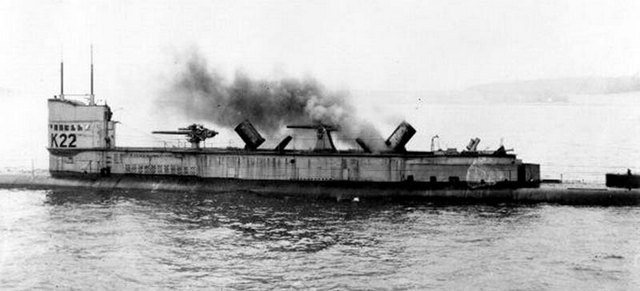

In 1918, the English admiralty ordered six boats K23 - K28, but in connection with the end of the First World War, the need for them has disappeared. Nevertheless, one boat (K26) was nevertheless completed in 1923.
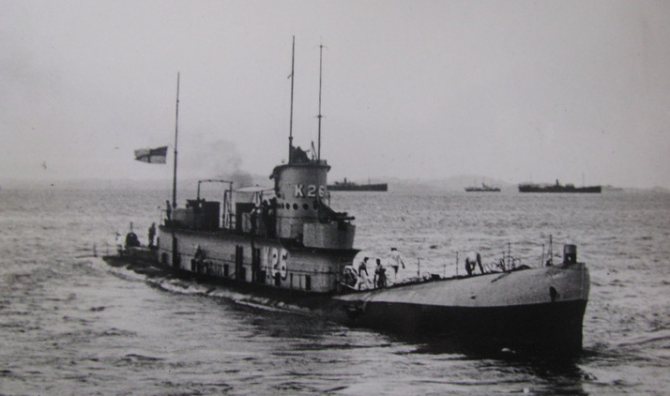

The boat was equipped with a steam turbine and fuel oil was used.
In 1931, the boat was sold for scrap.
Before the appearance of the first American nuclear submarine (1954) USS Nautilus (SSN-571), steam submarines were not built anywhere else in the world.
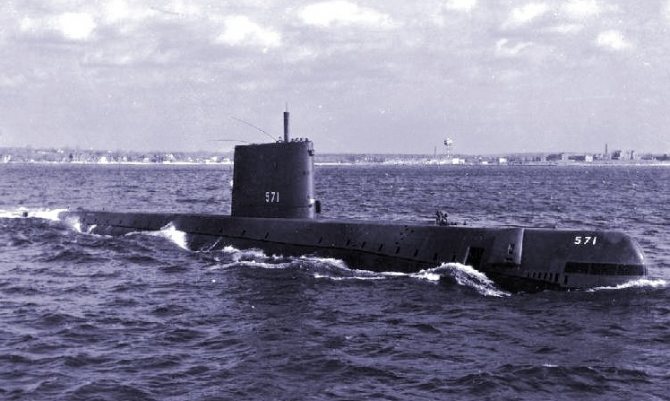

On nuclear submarines, steam turbines are used as the power plant, and the source of heat is a nuclear reactor.
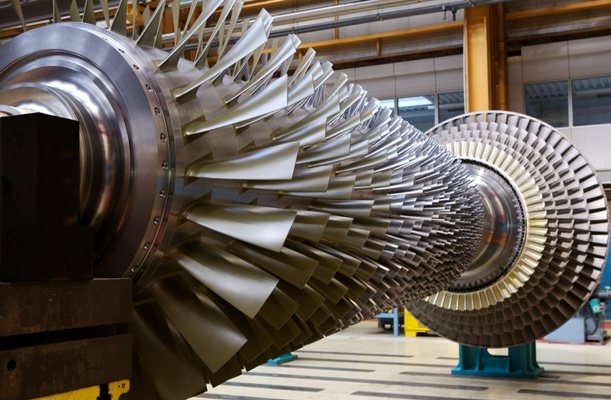

That's all…


All rights reserved © 2020 When copying, please indicate the active link to the source. Thank you!
Device and technical characteristics
At first glance, the construction of an ion boiler is complicated, but it is simple and not compulsory. Externally, it is a steel seamless pipe, which is covered with a polyamide electrical insulating layer. Manufacturers have tried to protect people as much as possible from electric shock and expensive energy leaks.
In addition to the tubular body, the electrode boiler contains:
- The working electrode, which is made of special alloys and is held by protected polyamide nuts (in models operating from a 3-phase network, three electrodes are provided at once)
- Coolant inlet and outlet nozzles
- Grounding terminals
- Terminals supplying power to the chassis
- Rubber insulating gaskets
The shape of the outer casing of ionic heating boilers is cylindrical. Most common household models meet the following characteristics:
- Length - up to 60 cm
- Diameter - up to 32 cm
- Weight - about 10-12 kg
- Equipment power - from 2 to 50 kW
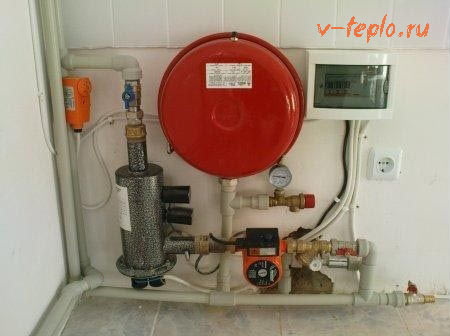

For domestic needs, compact single-phase models with a power of no more than 6 kW are used. There are enough of them to fully provide a cottage with an area of 80-150 square meters with heat. For large industrial areas, 3-phase equipment is used. An installation with a capacity of 50 kW is capable of heating a room up to 1600 sq. M.
However, the electrode boiler works most efficiently in conjunction with the control automation, which includes the following elements:
- Starter block
- Surge protection
- Control controller
Additionally, control GSM modules can be installed for remote activation or deactivation.Low inertness allows quick response to temperature fluctuations in the environment.
Due attention should be paid to the quality and temperature of the coolant. The optimal liquid in a heating system with an ionic boiler is considered to be heated to 75 degrees. In this case, the power consumption will correspond to that specified in the documents. Otherwise, two situations are possible:
- Temperature below 75 degrees - electricity consumption decreases along with the efficiency of the installation
- Temperatures above 75 degrees - electricity consumption will increase, however, the already high efficiency rates will remain the same
A simple ionic boiler with your own hands
Having familiarized yourself with the features and principle by which ionic heating boilers function, it is time to ask the question: how to assemble such equipment with your own hands? First you need to prepare the tool and materials:
- Steel pipe with a diameter of 5-10 cm
- Ground and neutral terminals
- Electrodes
- Wires
- Metal tee and coupling
- Tenacity and desire
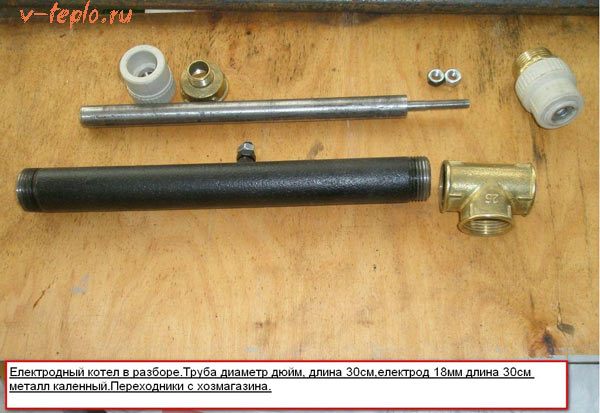

Before you start putting everything together, there are three very important safety rules to remember:
- Only phase is applied to the electrode
- Only the neutral wire is fed to the body
- Reliable grounding must be provided
To assemble the ion electrode boiler, just follow the instructions below:
- First, a pipe with a length of 25-30 cm is prepared, which will act as a body
- The surfaces must be smooth and free of corrosion, the notches from the ends are cleaned
- On the one hand, electrodes are installed by means of a tee
- A tee is also required to organize the outlet and inlet of the coolant.
- On the second side, make a connection to the heating main
- Install an insulating gasket between the electrode and the tee (heat-resistant plastic is suitable)
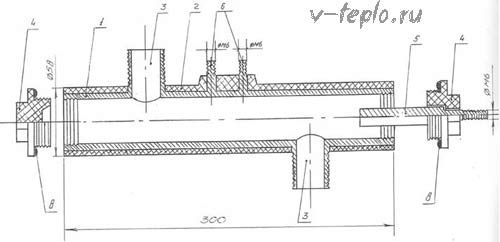

- To achieve tightness, the threaded connections must be precisely matched to each other.
- To fix the zero terminal and grounding, 1-2 bolts are welded to the body
Putting everything together, you can embed the boiler into the heating system. Such home-made equipment is unlikely to be able to heat a private house, but for small utility areas or a garage it will be an ideal solution. You can close the unit with a decorative cover, while trying not to restrict free access to it.
The principle of operation of ionic heating boilers
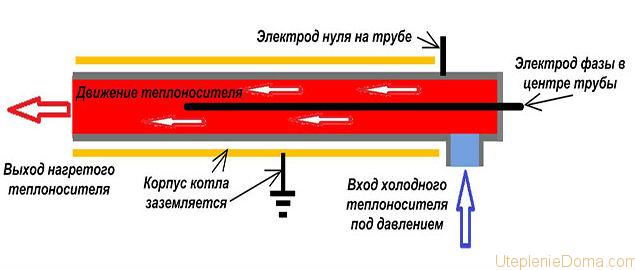

An ionic heating boiler heats water using electricity, but the principle of operation differs from the heating element. In this process, the decisive role is played by the ability of water to conduct current, more precisely, the resistance of the liquid. Remember a boiler of two blades connected by matches. In it, the current from one blade to another is transmitted only through water, as a result of which it quickly boils. An ionic boiler does the same, except that instead of blades, it has magnesium electrodes.
When the current ions pass through the water, friction is created with the salts that are in the liquid. As a result of friction, the temperature rises sharply. The more intense the current, the faster the heating process takes place. In addition, the amount of salts matters, and ionic heating boilers do not work with distilled water.
If you do not waterproof the cellar from groundwater, then it will be impossible to store vegetables in it.
The penetrating waterproofing of concrete floors makes them watertight.
When water enters the boiler flask, an electric current is passed through it, as a result of which it heats up. The boiler itself is small, about 30 cm in length. Accordingly, the coolant is in it for some seconds, but even this time is enough. These devices can be called the fastest among all boilers for heating.
Features of installation of ion boilers
A prerequisite for installing ionic heating boilers is the presence of a safety valve, a pressure gauge and an automatic air vent.The equipment must be positioned in a vertical position (horizontal or at an angle is unacceptable). At the same time, about 1.5 m of the supply pipes are not galvanized steel.
The zero terminal is usually located at the bottom of the boiler. A ground wire with a resistance of up to 4 ohms and a cross section of over 4 mm is connected to it. Do not rely solely on RAM - it cannot help with leakage currents. The resistance must also comply with the rules of the PUE.
If the heating system is completely new, there is no need to prepare the pipes - they must be clean inside. When the boiler crashes into an already operating line, it is imperative to flush it with inhibitors. There is a wide range of descaling, scale and descaling products on the markets. However, each manufacturer of electrode boilers indicates those that they consider to be the best for their equipment. Their opinion should be adhered to. Neglecting flushing will fail to establish an accurate ohmic resistance.
It is very important to select heating radiators for the ion boiler. Models with a large internal volume will not work, since more than 10 liters of coolant will be required for 1 kW of power. The boiler will constantly run, wasting part of the electricity in vain. The ideal ratio of the boiler output to the total volume of the heating system is 8 liters per 1 kW.
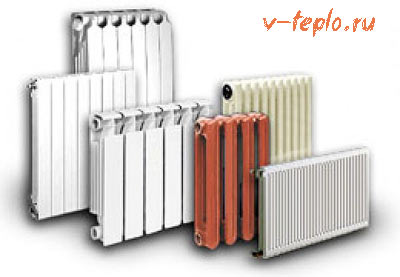

If we talk about materials, it is better to install modern aluminum and bimetallic radiators with minimal inertia. Choosing aluminum models, preference is given to the material of the primary type (not remelted). In comparison with the secondary, it contains less impurities, reducing the ohmic resistance.
Cast iron radiators are least compatible with the ion boiler, since they are most susceptible to contamination. If there is no way to replace them, experts recommend observing several important conditions:
- The documents must indicate compliance with the European standard
- Mandatory installation of coarse filters and sludge catchers
- Once again, the total volume of the coolant is produced and equipment suitable for power is selected
Freon gas became the cause of death of people on the submarine "Nerpa"
Freon gas became the cause of death of people on the submarine "Nerpa". He entered the compartments that were battened down after the fire extinguishing system was triggered. The UPC says that not all the results have been received yet, and forensic medical examinations will still be carried out. As well as the investigation, which should find out why the fire system went off and why the people on the boat could not use breathing apparatus that could save them from death.
Freon gas became the cause of death of people on the submarine "Nerpa". He entered the compartments that were battened down after the fire extinguishing system was triggered. The UPC says that not all the results have been received yet, and forensic medical examinations will still be carried out. As well as the investigation, which should find out why the fire system worked and why the people on the boat could not use breathing apparatus that could save them from death. Business FM correspondent Elena Ivankina will continue the topic.
The incident occurred at about 20.30 local time. "Nerpa" was undergoing sea trials in the Sea of Japan, when suddenly a fire extinguishing system worked in the bow of the submarine. Two compartments were instantly blocked and filled with freon. It was this gas that caused the deaths of three sailors and seventeen engineers from the test team of the Amur shipyard. Another 21 people were hospitalized.
There is no alternative fire extinguishing system on the submarine, says captain of the first rank, submariner Gennady Sidikov:
“In the event of a fire, these systems are supplied with freon, which extinguishes the flame and kills the crew members who are prohibited from leaving the compartment. In case of fire and flooding, the entire train is prohibited from leaving the compartment.So when triggered, people apparently died. "
During a fire, to protect against both carbon monoxide and freon extinguishers, each crew member must have a portable breathing apparatus. And there were enough of them on Nerpa - 220. Now the investigation has to find out why those who were in the locked compartments could not use them. The consequences of the accident could be much more serious if the emergency happened in the aft part of the boat, where the nuclear installation is located. Assistant to the Commander-in-Chief of the Navy, Captain 1st Rank Igor Dygalo, assured that there is no threat to the reactor:
“The boat has no damage, the reactor compartment is operating normally. The radiation background is normal. "
The blame for what happened is likely to be blamed on the manufacturer, experts say. The submarine had not yet had time to get up on combat duty, and the military was quick to say that they had nothing to do with it. Tests of the "Nerpa" began in October, and last week the submarine successfully completed its first dive. The sub was supposed to join the Navy at the end of this year. However, according to other information, it was planned to lease the Nerpa to India for 650 million dollars, and it was this money that made it possible to complete the construction of the nuclear submarine. After the submarine was handed over, India wanted to rename it Chakra. What the fate of the damaged submarine will now be is unknown.
The nuclear submarine is equipped with 220 portable breathing apparatus. They should have been enough for everyone, but for some reason the victims could not quickly use them. The construction of the Nerpa nuclear submarine began in 1991. It is a third generation multipurpose submarine. This accident was the largest after the tragedy with the Kursk submarine.
Add BFM.ru to your news sources?
